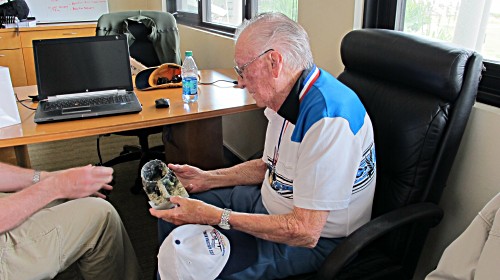There was a time (I’m told) when new concepts were named by going back to Latin and describing the concept as literally as possible. Today we tend to smash a couple of words together sans hyphen and call it a day. Reading the Sunday paper this week I came across a new one, “technoligious”. Essentially, it’s following a particular technology faithfully despite any facts that contradict one’s beliefs. While this exists across the world of IT (both professional & consumer grades) it seems particularly troubling in the 3D imaging world. It brings forward an interesting delineation that we English speakers tend to disregard. What you think versus what you believe.
I had a professor in college that used the Socratic Method ad nauseam (I do know a little Latin…). He would immediately shut you down if you said, “I believe…” and it was about something that was a definable fact. If you believed it then it was by definition an article of faith. You could not prove it, therefore it was less persuasive than the opposing thought.
I’ll start by confessing that there was a time when I completely believed that one manufacturer had the best top-to-bottom solution and never looked outside of their offerings. The reason was simple. I had invested in their solutions and the last thing I wanted was for them to fail and leave me holding a dead-end product. Besides, the thought of starting over with a new platform made me sick to my stomach! All of the time and money that I had invested kept me in the fold.
That all changed for me but to be honest, it took outside factors to shake my belief. First of all, more systems became interoperable due to common file types. Switching a piece of hardware or software is a lot less scary than a total reboot of every part of your system. Secondly, middleware started popping up— smaller (than platform software) programs that did just one or two things but did them really well and accepted lots of data formats (LAStools, ClearEdge3D, Kubit, etc.) These little agnostic tools were a gateway to thinking outside of one manufacturer’s dogma when it came to data processing.
Today, I consider myself completely agnostic. However, in reviewing the data that was shown last week from the Autodesk USS Arizona Project I caught myself being a bit hypocritical. My initial reaction to the idea of bringing all of these different collection technologies to bear on a single project fit right into my line of thinking but when I saw how much was being done with photography and ReCap 360 (Photo), I found myself, well, acting like a technoligious. Is the photo data as accurate as LiDAR data? I’m not sure, but it doesn’t mean that I should dismiss it just because it was all done without hardware from a “survey” grade device.
I’ve been an evangelist of late for using the right tool for each project; even if that means using multiple tools on one project. If I’m willing to abandon survey packages in the deliverable phase for readily available off-the-shelf options like HTML or PDFs I need to be ready to do the same with collection devices. Will a cellphone with a camera replace my scanner? I doubt it. At least not for engineering grade mapping over the next few years. After all, manufacturers still sell a lot of GPS receivers despite the fact that we all have one in our pocket if you have a cellphone. However, it might mean that I use a DSLR where I might have used a scanner in some future situations. And why shouldn’t it? I doubt that a laser would have been used for mapping in the first place if the manufacturers could have designed a sensor to collect point cloud data from ambient light. Just because the laser scanner was the best way to collect the information I needed for the past decade doesn’t mean that it always will be the best solution. I don’t believe that and I doubt that you do either. I’m just reminding us all that this is a science, and belief should not have anything to do with it in the first place.
Photo Credit: Business Wire






